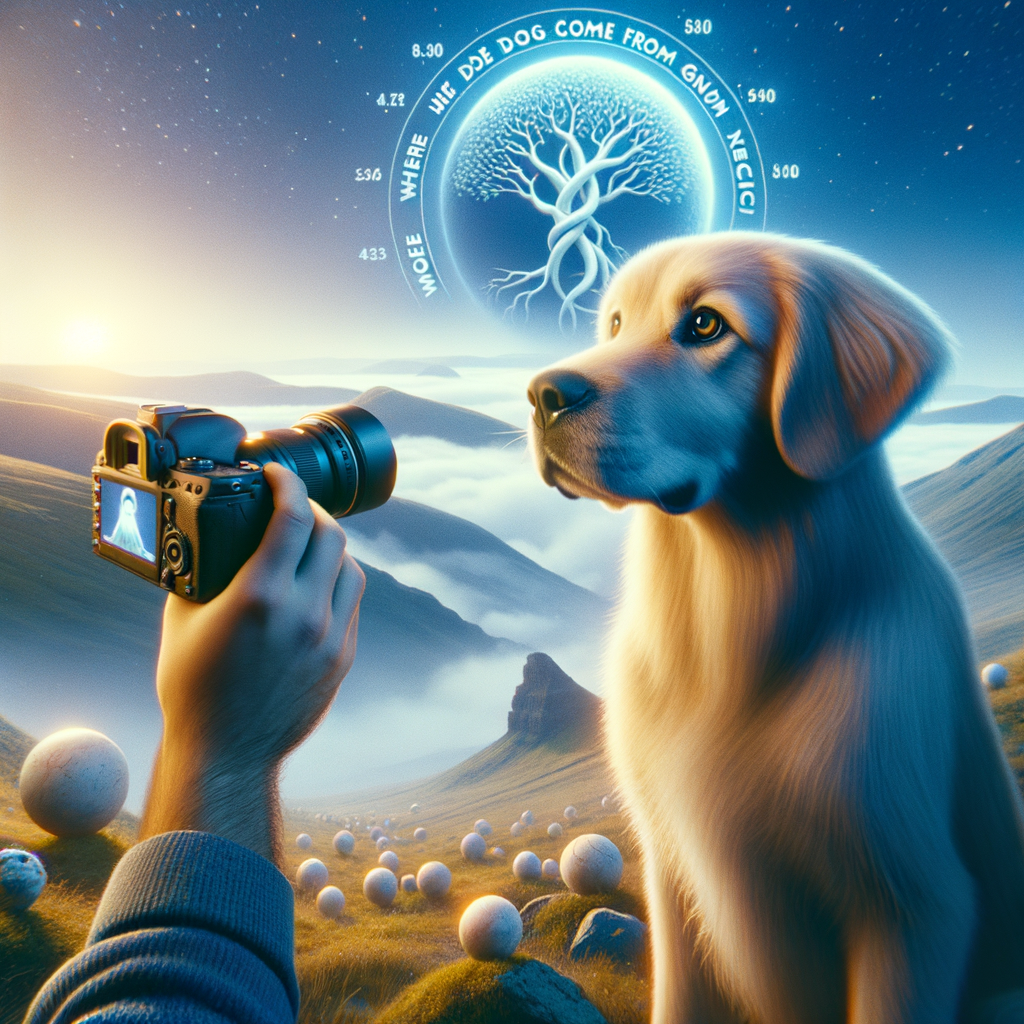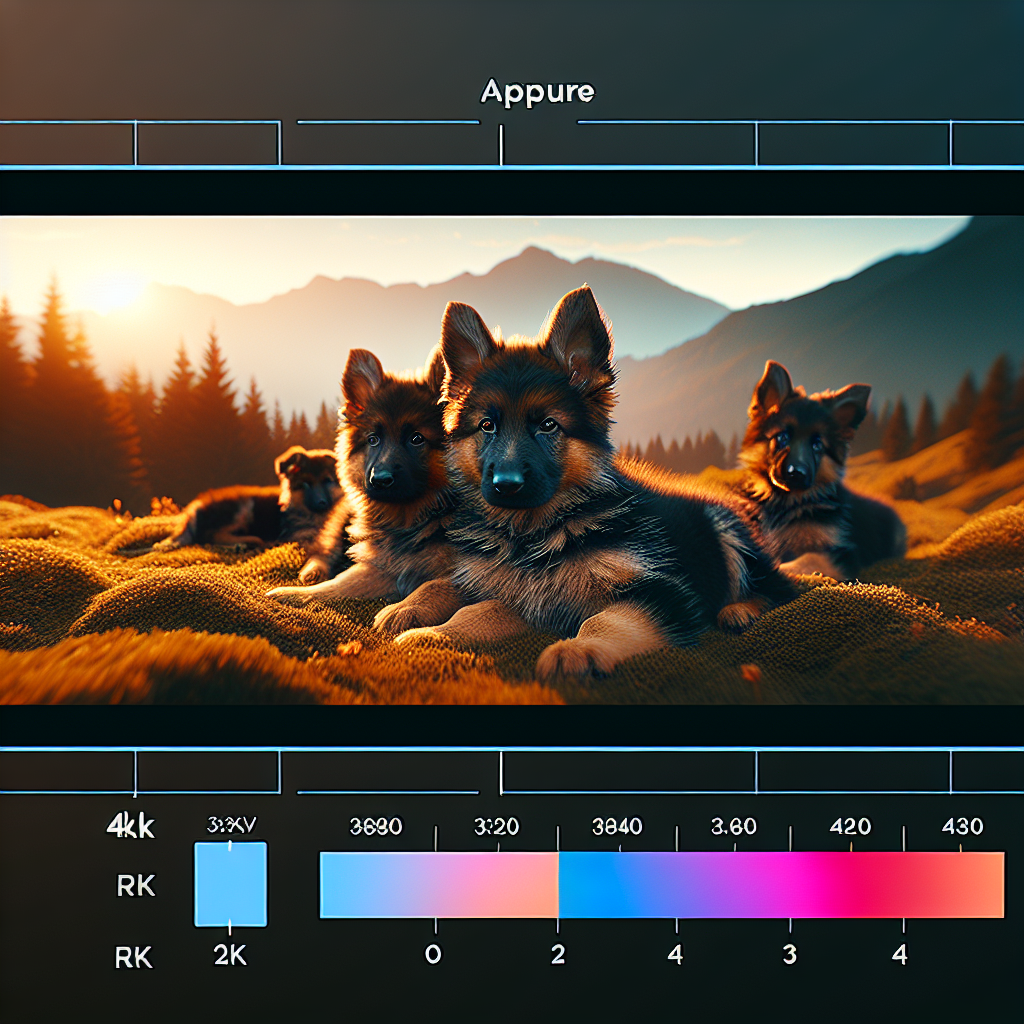where do dogs come from genetically?

where do dogs come from genetically?
-
Table of Contents
- Introduction
- The Genetic Origins of Dogs: Unraveling Their Ancestry
- Exploring the Evolutionary History of Canines: Tracing the Genetic Roots of Dogs
- From Wolves to Domestic Companions: Understanding the Genetic Journey of Dogs
- Genetic Diversity in Dogs: Unveiling the Origins of Different Breeds
- Genetic Adaptations in Dogs: How Evolution Shaped Canine Genetics
- Conclusion
Introduction
Dogs are believed to have descended from wolves, specifically the gray wolf (Canis lupus). Through selective breeding and domestication, humans have shaped the genetic makeup of dogs over thousands of years, resulting in the diverse range of dog breeds we see today.
The Genetic Origins of Dogs: Unraveling Their Ancestry
Dogs have been our loyal companions for thousands of years, but have you ever wondered where they come from genetically? The genetic origins of dogs are a fascinating topic that scientists have been unraveling for years. Through extensive research and DNA analysis, they have been able to trace the ancestry of our beloved furry friends back to their wild ancestors.
To understand the genetic origins of dogs, we must first look at their closest relatives in the animal kingdom: wolves. Wolves and dogs share a common ancestor, making them part of the same family, Canidae. It is believed that dogs were domesticated from wolves tens of thousands of years ago, but the exact timeline and location of this domestication process are still debated among scientists.
One theory suggests that dogs were domesticated from wolves in multiple locations around the world. This theory is supported by the fact that there are distinct genetic differences between dog populations from different regions. For example, the genetic makeup of a Siberian Husky is different from that of a Chihuahua. These differences can be attributed to the various populations of wolves that were domesticated in different regions.
Another theory proposes that dogs were domesticated from a single population of wolves in a specific region. This theory is supported by the fact that all dogs share a common genetic signature known as the “doggy DNA.” This DNA is distinct from that of wolves and other canids, indicating a common ancestor for all dogs.
Regardless of the exact timeline and location of domestication, one thing is clear: dogs have undergone significant genetic changes since their split from wolves. These changes are the result of selective breeding by humans over thousands of years. Selective breeding involves choosing dogs with desirable traits and breeding them together to pass on those traits to future generations. This process has led to the incredible diversity of dog breeds that we see today.
In addition to selective breeding, genetic mutations have also played a role in shaping the genetic makeup of dogs. Mutations are random changes in DNA that can occur naturally or be induced by external factors. Some mutations can lead to new traits or characteristics, which can then be passed on to future generations. For example, the mutation responsible for the short legs of Dachshunds and Corgis is a result of a genetic mutation.
Recent advancements in DNA analysis have allowed scientists to delve even deeper into the genetic origins of dogs. By comparing the DNA of different dog breeds and wolves, researchers have been able to identify specific genes that are responsible for certain traits. This knowledge has not only helped us understand the genetic basis of physical characteristics but has also shed light on the genetic factors behind certain diseases and behaviors in dogs.
In conclusion, the genetic origins of dogs can be traced back to their wild ancestors, wolves. Through selective breeding and genetic mutations, dogs have undergone significant genetic changes over thousands of years. While the exact timeline and location of domestication are still debated, one thing is clear: dogs have a unique genetic signature that sets them apart from wolves and other canids. Understanding the genetic origins of dogs not only deepens our appreciation for these incredible animals but also provides valuable insights into their health and behavior.
Exploring the Evolutionary History of Canines: Tracing the Genetic Roots of Dogs
Dogs have been our loyal companions for thousands of years, but have you ever wondered where they come from genetically? Exploring the evolutionary history of canines can provide us with fascinating insights into the genetic roots of dogs.
To understand the genetic origins of dogs, we need to go back in time to their wild ancestors, the gray wolves. It is widely believed that dogs descended from wolves, but the exact details of this domestication process are still a subject of scientific debate.
One theory suggests that dogs were domesticated from a group of wolves that were more tolerant of human presence. These wolves may have scavenged around human settlements, gradually becoming more comfortable with humans and eventually forming a mutually beneficial relationship. Over time, these wolves evolved into the first domesticated dogs.
Another theory proposes that dogs were domesticated from a different wolf population altogether. This population may have been more cooperative and less aggressive, making them more suitable for human companionship. This theory suggests that dogs and wolves share a common ancestor, rather than dogs descending directly from wolves.
Regardless of the exact process, it is clear that dogs and wolves share a common genetic heritage. Genetic studies have revealed that dogs and wolves are remarkably similar at the DNA level, with only a small number of genetic differences separating them. This suggests that the domestication of dogs occurred relatively recently in evolutionary terms.
As humans migrated across the globe, they brought their canine companions with them, leading to the diversification of dog breeds. Different breeds were selectively bred for specific traits, such as herding, hunting, or guarding. This selective breeding resulted in the wide variety of dog breeds we see today.
Interestingly, recent genetic studies have shed light on the origins of specific dog breeds. For example, DNA analysis has revealed that the Chihuahua, despite its small size, shares a genetic similarity with ancient Mexican dog breeds. Similarly, the Siberian Husky and Alaskan Malamute have genetic signatures that trace back to ancient Arctic dog breeds.
The genetic history of dogs also includes some surprising revelations. For instance, genetic studies have shown that the Basenji, a small African breed, is one of the most ancient dog breeds. Its genetic profile closely resembles that of the wolves from which dogs are believed to have descended.
In recent years, advancements in DNA sequencing technology have allowed scientists to delve even deeper into the genetic history of dogs. By comparing the genomes of different dog breeds, researchers have been able to identify specific genes associated with certain traits or diseases. This knowledge has not only enhanced our understanding of dog genetics but has also contributed to advancements in veterinary medicine.
In conclusion, the genetic roots of dogs can be traced back to their wild ancestors, the gray wolves. The domestication of dogs from wolves is still a topic of scientific debate, but it is clear that dogs and wolves share a common genetic heritage. The selective breeding of dogs by humans has led to the wide variety of dog breeds we see today. Recent genetic studies have provided insights into the origins of specific dog breeds and have contributed to advancements in veterinary medicine. Exploring the evolutionary history of canines not only deepens our appreciation for our furry friends but also enhances our understanding of genetics and evolution.
From Wolves to Domestic Companions: Understanding the Genetic Journey of Dogs

From Wolves to Domestic Companions: Understanding the Genetic Journey of Dogs
Have you ever wondered where dogs come from genetically? It’s a fascinating journey that takes us back thousands of years to the time when dogs were still wild wolves. Yes, that’s right! Our beloved furry friends have evolved from their wild ancestors into the loyal and loving companions we know today.
The genetic journey of dogs begins with the domestication of wolves. It is believed that humans started domesticating wolves around 15,000 years ago. This process involved selecting and breeding the friendliest and most trainable wolves, gradually transforming them into the first domesticated dogs. Over time, these early dogs diverged into different breeds, each with its own unique set of genetic traits.
One of the most remarkable aspects of dog genetics is the incredible diversity we see among different breeds. From the tiny Chihuahua to the massive Great Dane, dogs come in all shapes and sizes. This diversity is a result of selective breeding, where humans have intentionally chosen certain traits to be passed down to future generations. This process has led to the wide range of physical and behavioral characteristics we see in dogs today.
But how does selective breeding work on a genetic level? It all comes down to genes, the building blocks of life. Genes are segments of DNA that contain instructions for specific traits. When dogs reproduce, they pass on their genes to their offspring, determining their physical and behavioral traits. Selective breeding involves choosing dogs with desirable traits and breeding them together to increase the likelihood of those traits being passed on to future generations.
For example, if a breeder wants to create a breed of dogs with long, silky fur, they would select dogs with that trait and breed them together. Over time, the genes responsible for long, silky fur would become more prevalent in the breed. This is how breeds like the Afghan Hound and the Shih Tzu came to have their distinctive coats.
However, selective breeding also has its downsides. In some cases, breeders have focused so much on specific traits that it has led to health problems in certain breeds. For example, breeds like the Bulldog and the Pug have been bred to have short, flat faces, which can cause breathing difficulties and other health issues. It is important for breeders to prioritize the health and well-being of the dogs they are breeding, rather than solely focusing on appearance.
In recent years, scientists have made significant advancements in understanding dog genetics. The mapping of the dog genome has allowed researchers to identify specific genes associated with certain traits and diseases. This knowledge has not only helped us better understand the genetic history of dogs but has also led to advancements in veterinary medicine and the development of genetic tests for breed-specific diseases.
In conclusion, the genetic journey of dogs takes us from their wild wolf ancestors to the diverse and beloved companions we know today. Selective breeding has played a significant role in shaping the genetic traits of different dog breeds, resulting in the incredible diversity we see among them. However, it is important for breeders to prioritize the health and well-being of dogs and not solely focus on appearance. With ongoing research and advancements in genetics, we continue to deepen our understanding of our furry friends’ genetic origins and how we can ensure their future well-being.
Genetic Diversity in Dogs: Unveiling the Origins of Different Breeds
Dogs have been our loyal companions for thousands of years, but have you ever wondered where they come from genetically? The answer lies in the fascinating world of genetic diversity in dogs. By unraveling the origins of different breeds, we can gain a deeper understanding of our furry friends and the incredible journey they have taken alongside humans.
To understand the genetic diversity in dogs, we must first delve into their ancient ancestors. It is widely believed that dogs descended from wolves, with the domestication process beginning around 15,000 years ago. This domestication led to the development of various breeds, each with its own unique set of characteristics and traits.
As humans migrated across the globe, they brought their canine companions with them, resulting in the spread of different breeds to different regions. This migration, combined with selective breeding, played a crucial role in shaping the genetic diversity we see in dogs today.
One of the most well-known examples of genetic diversity in dogs is the difference between small and large breeds. This variation can be attributed to the process of artificial selection, where humans selectively breed dogs with desired traits. Over time, this has led to the development of breeds like Chihuahuas and Great Danes, which are at opposite ends of the size spectrum.
Another fascinating aspect of genetic diversity in dogs is the presence of breed-specific health issues. Certain breeds are more prone to certain diseases due to their genetic makeup. For example, German Shepherds are predisposed to hip dysplasia, while Bulldogs often suffer from respiratory problems. Understanding these genetic predispositions can help breeders and veterinarians take proactive measures to ensure the health and well-being of these breeds.
In recent years, advancements in genetic research have allowed scientists to delve even deeper into the origins of different dog breeds. By analyzing the DNA of various breeds, researchers have been able to uncover surprising connections and trace the ancestry of different breeds back to their roots.
For instance, a study conducted in 2017 revealed that the Basenji, a small African breed, shares a genetic similarity with the ancient Egyptian dog. This finding suggests that the Basenji may have descended from dogs that were present in ancient Egypt thousands of years ago.
Similarly, genetic studies have shed light on the origins of popular breeds like the Siberian Husky and the Alaskan Malamute. These breeds were found to have a close genetic relationship with the ancient sled dogs of the Arctic, highlighting their shared ancestry and the important role they played in the lives of indigenous peoples.
In conclusion, the genetic diversity in dogs is a testament to the incredible journey they have taken alongside humans. From their wolf ancestors to the wide array of breeds we see today, dogs have evolved and adapted to various environments and lifestyles. By unraveling the origins of different breeds, we gain a deeper appreciation for the genetic diversity that makes each dog unique. So, the next time you look into your furry friend’s eyes, remember the rich genetic history that brought them into your life.
Genetic Adaptations in Dogs: How Evolution Shaped Canine Genetics
Dogs have been our loyal companions for thousands of years, but have you ever wondered where they come from genetically? The answer lies in the fascinating world of genetic adaptations in dogs and how evolution has shaped their genetics.
To understand the genetic origins of dogs, we need to go back in time to their wild ancestors, the gray wolf. It is widely believed that dogs descended from wolves, with the domestication process beginning around 15,000 years ago. This domestication process involved humans selectively breeding wolves with desirable traits, such as friendliness and trainability, to create the first domesticated dogs.
Over time, these early domesticated dogs underwent genetic adaptations that allowed them to thrive in their new human-centric environment. One of the most significant genetic adaptations in dogs is their ability to digest starch. Unlike their wolf ancestors, dogs have multiple copies of the gene responsible for producing amylase, an enzyme that breaks down starch. This genetic adaptation allowed dogs to thrive on the starch-rich diets provided by their human companions.
Another genetic adaptation in dogs is their diverse coat colors and patterns. Wolves typically have a limited range of coat colors, such as gray, black, and white, which help them blend into their natural habitats. However, through selective breeding, humans have created a wide array of coat colors and patterns in dogs, from solid black to spotted or brindle. These genetic adaptations in coat color have no survival advantage but are purely aesthetic, reflecting the human desire for variety and uniqueness in their canine companions.
Size is another genetic adaptation that has been shaped by human intervention. Wolves are generally larger than most dog breeds, but through selective breeding, humans have created dogs of various sizes, from tiny Chihuahuas to massive Great Danes. This genetic adaptation in size allowed dogs to fulfill different roles, such as hunting small game or guarding livestock, depending on their size and physical capabilities.
Furthermore, dogs have also undergone genetic adaptations that affect their behavior. Wolves are highly social animals that live in packs, and this social behavior has been retained in dogs. However, dogs have developed a unique ability to understand and communicate with humans, which is not present in their wolf ancestors. This genetic adaptation has made dogs excellent companions and working animals, as they can easily understand and respond to human cues and commands.
In recent years, advancements in genetic research have allowed scientists to delve deeper into the genetic origins of dogs. Through DNA analysis, researchers have identified specific genes associated with various traits in dogs, such as coat color, size, and behavior. This research has provided valuable insights into the genetic adaptations that have shaped the modern dog.
In conclusion, dogs have undergone remarkable genetic adaptations throughout their domestication journey. From their ability to digest starch to their diverse coat colors and sizes, these genetic adaptations have been shaped by human intervention and have allowed dogs to thrive in their human-centric environment. Understanding the genetic origins of dogs not only provides us with a glimpse into their fascinating evolutionary history but also highlights the unique bond between humans and their canine companions.
Conclusion
Dogs are believed to have originated from wolves through a process of domestication.





